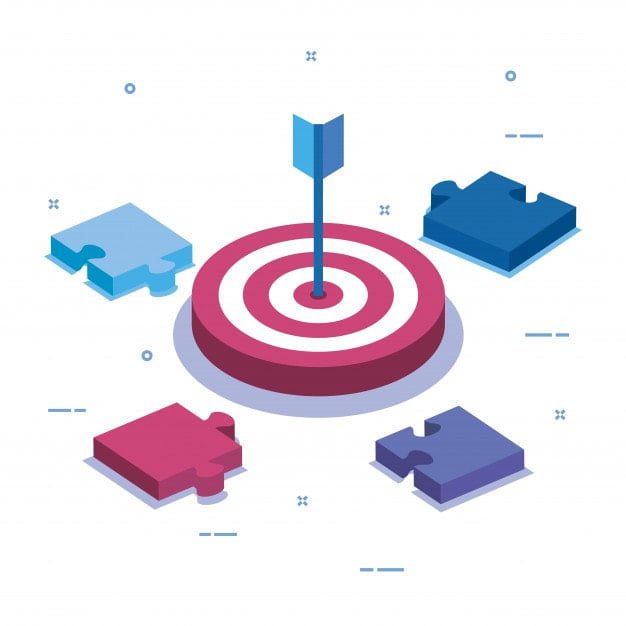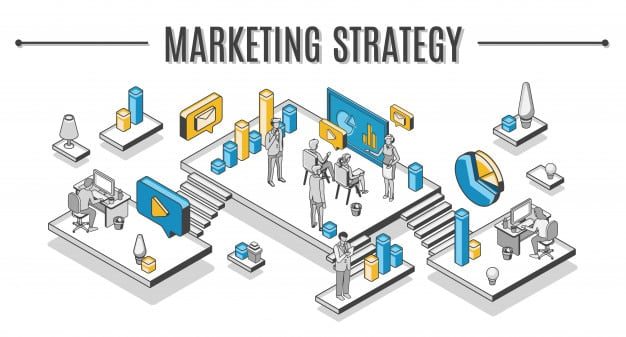Do you Want to establish yourself as a marketing guru so that business will approach you as a brand?
Let’s reveal the advanced ways of marketing further-
The main goal of every business is to make money. No one wants their business to earn the loss. So to make your business grow business marketing is very important. If you know marketing models only then you can make your business grow and earn a profit. Here we are discussing the STP Marketing which can lead to your business growth.
So let’s read the blog on STP Marketing & learn how to Position Yourself as a Brand.
What’s In It For Me
- What is STP
- What is Segmentation
- Types of Segmentation
- Different Factor of Segmentation
- Advantage & Disadvantage of Segmentation
- What is Targeting
- Importance of Targeting In Marketing
- Different Strategies for Targeting
- What is Positioning
- Benefits of Positioning
- How To Position
1. What is STP Marketing?
STP Marketing stands for segmentation, targeting and positioning. STP Marketing makes the process of marketing easy. It is very easy to understand and apply in business.
The main goal of STP Marketing is to attract the customer and not only to attract the customer but also getting the right customer who will be interested in our product.
First, we will divide the group into segments and then we will target that segment who will be interested in our product and then we prepare our product according to the needs of the targeted segment. STP Marketing is given below in details:

2. What is Segmentation?
Market segmentation is the research that defines whether the business divides its consumers or demographic into smaller groups based on features such as age, income, personality traits or behaviour. These categories can be used later to tailor goods and advertising for different customers.
Market segmentation is the research that defines whether the business divides its consumers or demographic into smaller groups based on features such as age, income, personality traits or behaviour. The segmentation of marketing means splitting the market into sections that represent customer needs and wants.
3. Types of Segmentation
1. Demographic SEGMENTATION (what)-
- Age: – 0-5,5-10, 10-15,15-25, 25-35,40 above
- Gender:- male ,female
- Income:-high income group
Middle income group
Low income group
- Family status:– 0-1,1-2, 2-4,above 4
- Occupation:– Professional, Self-employed, Student, retired etc.
- Marital status:– single, married,
- Religion:– Hindu, Muslim, Sikh, christen
2. Geographic segmentation( where)-
it is based on country, state, region (metro city, urban city, rural city).
3. Geo-demographic segmentation –
a combination of demographic and geographic.
4. Behavioural segmentation(how) –
It is based on lifestyle ( habits, attitude, traits) need-based, customer loyalty.
5. Psychographic (who) –
based on personality traits, beliefs, values, attitude, interest, etc.
4. DIFFERENT FACTORS OF SEGMENTATION
Segmentation is also the approach of the marketing mix, marketing strategy, marketing
environment, and marketing plan.
- Marketing mix– it includes the product, price, place, and promotion.
- Marketing strategy-
A marketing strategy helps to fix the advertising budget in Advance and it also develops a method to determine the plan’s scope, i.e determine the advertising plan’s revenue generated. It also analyzes the market, analyzes the competitor, identifies the target audience, defines the marketing mix, analyzes the market plan, etc.
- Marketing environment– it includes the micro-environment, macro environment.
- Micro-environment:– it is controllable.
-
-
- Market demand
- Suppliers
- Competitors
- Industry
- Consumer
- Government policies
-
- Macro environment:– it is uncontrollable.
- Political environment
- Economic environment
- Technological environments
- Natural environment
- Global environment
- Marketing plan:– Marketing plan is a business plan.it is the process of identifying the marketing goals and objectives, identify the opportunities, define swot analysis, identify the target audience. check the budget, identify the marketing mix and final implementation and control. Its process is important because it is essential, as they promote the sale to any business owner. Increase the chance of converting leads into sales.
5. Advantage and Disadvantage of Segmentation
10 benefits of market segmentation
- Increase sales
- Increase the growth rate
- High profit
- Increase the market share
- Provide adequate marketing direction
- Facilitate proper marketing selection
- Helps the targeting and positioning
- Attract new customers.
- Provide a competitive advantage
Disadvantage of segmentation
- Cost Increase when the company attempts several segments of the market
- Expenditure on marketing when the company used different programs is used.
6. What is Targeting
After segmentation, you have to do target marketing. First of all, What is target marketing?
Target marketing is niche-specific marketing. The niche is not based on products but customers. You have to identify your potential customers who will purchase your product based on their needs. There are around 7 billion people on earth. You can’t sell your product to all people because they are not interested in purchasing from you. That’s where target marketing works. So Targeting the Second step of STP Marketing

7. Importance of Targeting
It is quite a normal question about the importance of target marketing.
But is it very important to know your customers?
YES!!!!
How will you sell your product if you don’t know who is your customers? It will cost you so much money and that will even fail.
Let’s understand it by example.
Suppose you have a product like a notebook. Now, you decide to sell it on the market. You choose a place like a restaurant. You started selling the notebook outside of the restaurant but people are not interested in your notebook. You have the best visual cover, thick paper quality and even has a low cost. STILL, people are not purchasing.
You know why?
Because they are mainly working professionals and have their smartphone where they can write their queries, goals, schedules and many more. It is easy to keep in their pocket. So, why will they purchase your product?
But if you decided to sell it outside the school. Then, they can purchase from you because they need a good quality notebook. They will love to have your notebook because it is cost-effective with good visual design.

8. Types of Target Marketing Strategies
With the increase in market segments, increase in competition and change in purchasing power of people, it is necessary to use the different types of marketing strategies to influence your potential customers.
Well, there are many segments available in the new market and with the development of technology and human behaviour, it will result in increasing. It would not be easy to cater to your customers.
Well, there are so many marketing types and strategies available on the internet to make it hard for marketers to understand every type.
But there are 4 originally types of target marketing:-
- Undifferentiated marketing
- Differentiated marketing
- Concentrated or focused marketing
- Customized marketing
- Undifferentiated Marketing
The company who are approaching the vast audience with the supply of mass-produced product used this strategy.
This marketing is for the company having one type of product. They have minimal knowledge of their customer’s characteristics and behavioural patterns ( targeted audience ). There is an absence of segmentation.
This strategy results in the lower cost of production and marketing which helps in earning huge revenue.
They have one type of product and don’t have to invest in Research and development. They believe in the mass market philosophy.
Coca-Cola is the best example of it where they target every kind of customer from children to adults to aged people. They have a fixed type of production and heavily invest in marketing to increase their sales.
- Differentiated Marketing
When there is an increase of segments in your existing segment which resulted in the birth of differentiated marketing. This is also known as multi-segment marketing. Every brand trying to enter every segment with the growth in the demand for different products.
Differentiated marketing helps to cater to your multiple audiences to help in the boost of profitability, sales volume, market presence, market share, economies of scales and large audience reach.
But also cost so much like human resource, Production cost, inventory, research and development, operational cost, marketing research, product design and many more.
This marketing result in different marketing strategies for different types of customers. Sometimes, you have to compare your new products with existing products with different offerings to attract existing and new customers.
Apple is the best example where they introduce different products for different audiences in the Tech segment. It has the iPhone, iPad, iMac, iPod, etc. they created the different products in such a way that if you purchase one product, you can’t use the different products in it. For example:- if you bought the iPhone, you have to take the iPod and charger because of similarities in their technology apart from android.
- Concentrated or Focus Marketing
There are several segments but some choose not to fulfil everyone’s needs. They just targeting the specific audience to solve their big problems. This strategy is useful for the company with limited resources. They are the one who knows their audience very well.
This strategy might not result in too much profit but helps to create a loyal fanbase. This creates a demand for customers in the company. But, this required most of the money invested in R&D for the companies. Their main focus depends on innovation and marketing.
Startups in India are the best examples where everyone is targeting the different problems of a different audience.
This helps them to generate more net profits with the use of limited resources and limited expenses. Mainly, large companies with high profits use this strategy to enter the different segments.
But this can result in the decline of the company due to the availability of one income stream and might face financial issues due to the market changes and market fluctuation. The increase in marketing expenditure and change in the market can put the companies into low profits or negative losses in revenue.
- Customized Marketing
This serves public and company relations where companies believe to resolve every problem of their customers by providing the product according to the customer’s desire and needs.
They don’t cater to the large audience but serves individuals to build a sustainable relationship with them. This increases the highest marketing expenditure and sales efforts.
This marketing usually used by large organizations or manufacturers because of the high value of orders and the special needs of customers to gain trust and future profitability. You have also used that customized T-shirts websites like Teespring where you got your designed T-shirts.

9. What is Positioning
This is the last step of the STP Marketing process. position means place. In other words, we can say where you stand. In marketing, we understand the positioning of a product. In simple words, positioning in the market means where your product stands in the market. it means how our product stands different from other products in the market and how it is better than our competitor’s product.
we have to make our customers understand that our product is better than our competitor’s product so that when our customers think of buying something, our product must be the only product that comes to their mind.
Ex: Maggi and surf excel. Some people don’t know the word noodles. They just go to the shop and ask for Maggi and the same is the case with surf excel. The market is full of products and services.
Every product has a lot of its substitutes in the market. So the question is how we will make our product best. How we will make our customers understand that our product is better than its substitutes. We have to make our product that unique that the product is known by our brand only.
Ex: Volkswagen, Wal-mart, coca-cola, Amazon, Nike, dominos and apple.

10. Benefits of Positioning
1. Customers: Good positioning(stp of any product) will lead to more customers. Good positioning will attract the attention and interest of the customer.
2. Profit: when more customers will be attracted then there will be more profits. A good profit will make the company grow and succeed.
3. Brand loyalty: Good product positioning will always earn brand-loyal customers. It means customers will always prefer our product over competing brands. They will always repeatedly buy your product. When the company launches a product, a brand loyal customer always wants to buy that first.
4. Power: Good positioning will give power to the brand. Your competitor starts following you. They will follow your steps like what price you are charging, your technology, etc. a good positioning can make you the king of the market.
11. How To Position
i. Understand audience persona
A persona is a research done to understand our audience and its needs. So when we understand our customers only then we understand their needs in a better way. So when we do our research we understand what qualities we need in our product.
ii. Prices and discounts
The price is something we pay in return for our product. Prices should not be too high for our target audience. We should set a price which is affordable for our customers. We can also check our competitor’s price with the substitute. Prices should not be set too low or not too high with the competitor. Discounts can also be offered with the product.
Ex: buy 1 get 1 free.
iii. Quality
quality is a very important element of a product. We should try our best to offer the best quality in the market. A bad quality product never stays in the market for long. A product who offers good quality always stays in the mind of the customer. If the quality of the product is good then people also share their experiences with family and friends which in turn is beneficial for the product as the product gets promoted.
iv. Up to date
changes are necessary. We should know about how the taste of our customers is changing and should make changes in our product accordingly. Products who don’t change according to the need of the customer always get lack behind. We should keep making changes whether its in design or features.
v. Technology
as technology is changing very fast, we should keep up with the technology. We should keep making technological changes in our product according to the need of the customer.
vi. Promotion
Promotion is the activity that is done to make the customer know about our product. we can convey our product’s benefits and features to the customer so that customers could be more aware. Promotion plays a very important role in the sales of a product. A right promotion can sometimes do wonder for a product. Earlier the only sources of promotion were newspapers and radios. Nowadays promotion can be done digitally also. It can be done on digital platforms like Facebook, Instagram, Twitter, etc.
vii. Competitor
a good businessman is someone who always keeps an eye on its competitor’s product. We can check what price, Discounts, technology, features they are offering to improve our product in a better way so that our customers don’t run to our competitors.
viii. Service
service is how we treat our customers. A good service always stays in the mind of the customer. It is something that makes us different from our competitors. Just treat your customers as God and treat them in the best way possible. Ex: solve queries on time.
ix. Supply
The product should be supplied in a way so that it can fulfil the demand of its customers. We should not make our customers wait for our product as it can lead them to switch to substitute products.
x. Feedback
feedback is the customer’s views on our product as if they are liking our product or not and what they want us to improve and if they want us to remove something from our product. Every feedback matters. For feedback, we can create a feedback form on our website and we can also create surveys and we can also create some questionnaires for feedback.
Conclusion
Now, you have the overall idea related to STP in Marketing. You are ready to apply for all applications. But try to execute that is shown in the post.
First, understand your business. Then, apply the appropriate things in your business.
If you still have queries.
Feel free to comment on your questions.
STP Marketing stands for segmentation, targeting and positioning. STP Marketing makes the process of marketing easy. It is very easy to understand and apply in business
STP in marketing stands for Segmentation, Targeting and Positioning.
STP in marketing helps you to find, group and target the actual audience.
STP Marketing stands for segmentation, targeting and positioning. STP Marketing makes the process of marketing easy. It is very easy to understand and apply in business
Increase sales
Increase the growth rate
High profit
Increase the market share
Provide adequate marketing direction
Facilitate proper marketing selection
Helps the targeting and positioning
Attract new customers.
Provide a competitive advantage



